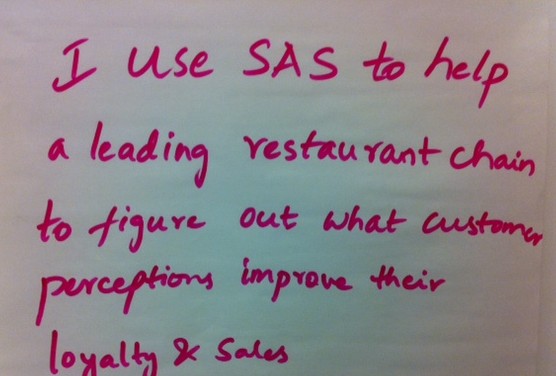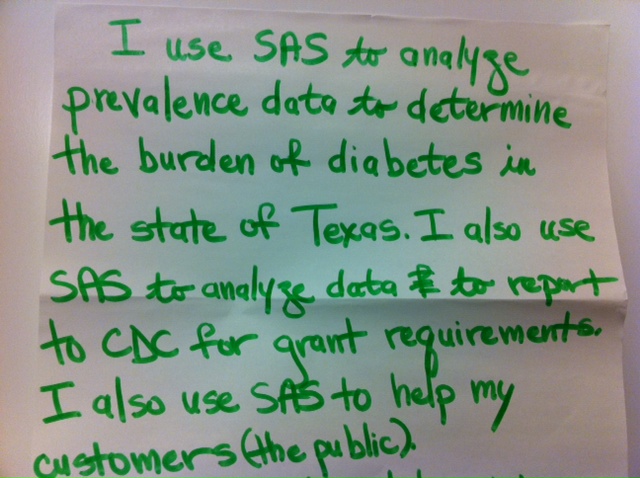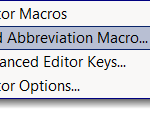All Posts
The dimensions of your graph can affect the aspect ratio, which in turn, can subtly affect the perception of your viewers. When visual perception is of prime importance, the aspect ratio of the graph needs to be adjusted with care. This technique is known as ‘banking’, was introduced by William

26.2! If you smiled when you read that number, then you are likely one of the cognoscenti who ran a marathon or know somebody that ran a marathon. If you didn’t recognize that number, then by now you may have guessed that it is the number of miles in a

On this blog, I've delivered a few tips about using SAS formats to stratify your data values "in place" without having to actually change your data. The most recent example addressed date and datetime variables. My previous examples included simple SAS programs that you can run in SAS display manager

Howdy. Waynette invited me to submit a blog post or two on her behalf while she rests up after a hectic Thanksgiving. Many of you don't have SAS Global Forum 2012 on your short-term radar. After all, Opening Session on April 22 is still almost 5 months away. I know
A frequently asked question about the Survival Plot is: "How can I display the 'At Risk' data outside the plot area?". The survival plot rendered by the LIFETEST procedure displays the at risk data inside the plot data area. The reason for this is the potential for varying number of treatment groups. Here

~Contributed by Rex Pruitt, IFSUG Chairman One of the newest SAS users groups has settled on a date, time and place for its first formal get-together. IFSUG (Insurance & Finance SAS Users Group) will meet March 4-6 in the new SAS Executive Briefing Center in Cary, NC. The IFSUG Summit will

I've heard it said that perception is everything, but can you really track and measure customer perception in a way that will allow you to effect change? The answer is yes.
In a previous article we discussed how to add axis aligned statistics table to a Lipid graph using GTL. Other graphs such as the Survival Plot also utilize the same technique to display the "at risk" statistics aligned by time or visits along the X axis. Often, we also need to display

I’ve been fortunate to see a lot of the US through my work with SAS users groups. My latest trip was to Fort Worth, Texas, where I saw my first rodeo and attended the South Central SAS Users Group (SCSUG) Educational Forum.
The heatmap is a graphical representation of a table where colors are used to represent the values in the table. This is an effective graphic for finding the minimum and maximum values across the table and may surface patterns in the data. With the addition of the HEATMAPPARM statement to

If you’ve taken one of my SAS classes you may recall “Mark’s 3 rules of programming”, the first of which is “Lazy programmers are GOOD programmers.” One of the things I love about best about SAS programming is the plethora of functions and shortcuts built into the language, all designed

Rick Wicklin's blog post on using abbreviations provided a solution for a long standing pain. When writing a new GTL program for simple graph, often the bulk of the code is boiler plate. To create a simple scatter plot of weight by height, you need to type in the following program:

Rick posted a tip today about using abbreviations in the SAS program editor window (often referred to as the "enhanced editor"). Defining abbreviations is a great way to save keystrokes and re-use "templates" of code that you've squirreled away. (One of Rick's readers also picked up on the tip, and
In this blog we will discuss many aspects of the SG Procedures. This article will cover some basic features and workings of the SGPLOT procedure to establish a baseline. The single-cell graph is the work horse for data visualization. From the simple bar chart to the complex patient profiles for clinical








